The new Corsair RMx Shift series brings an innovation: a side-positioned DC connector panel. According to the brand’s claims, this provides a tremendous boost to cable management since users have an easier access to the modular panel. Moreover, all Shift models are ATX v3.o and PCIe 5.0 ready.
Corsair decided to exploit the popular RMx series, so in its new series, it uses the RMx naming scheme, but it adds a “Shift” at the end of it. This word was used because the modular panel was shifted from backward to the side. I am not sure if this change on the modular panel’s position will work on all chassis since some have special PSU compartments covering the PSU’s sides, but it is high time for the chassis manufacturers to make some changes, too.
The new Corsair RMx Shift series includes four members with capacities ranging from 750W to 1200W. In this review, I will look at the second member of the line, with 850w max power. I have already posted all their reviews for those interested in discovering more about the other Shift models, so feel free to check them out.
The MSRPs of all Corsair Shift models.
- Manufacturer (OEM): CWT
- Max Power: 1200W
- Cybenetics Efficiency: [115V] Gold (87-89%)
- 80 Plus Efficiency: Gold
- Noise: Cybenetics A- (25-30 dB[A])
- Compliance: ATX12V v3.0, PCIe 5.0, EPS 2.92
- Alternative Low Power Mode support: Yes
- Power 12V: 1200W
- Power 5V + 3.3v: 150W
- Power 5VSB: 15W
- Cooling: 140 mm Fluid Dynamic Bearing Fan (NR140P)
- Semi-Passive Operation: Yes
- Modular Design: Yes (Fully)
- High Power Connectors: 2x EPS (2x cables), 8x PCIe 6+2 pin (6x cables), 1x PCIe 12+4 pin (600W)
- Peripheral Connectors: 16x SATA (4x cables), 8x 4-pin Molex (single cable)
- ATX/EPS Cable Length: 610/650mm
- Distance between SATA connectors: 110mm
- Distance between 4-pin Molex connectors: 100mm
- In-cable capacitors: No
- Dimensions (W x H x D): 150 mm x 85 mm x 180 mm
- Weight: 1.98kg (4.37lb)
- Warranty: 10 years
Box & Bundle
The box has a sticker with ATX 3.0 compatibility at its top right side. It also speaks of a 600W 12VHPWR connector.
For quite some time, Corsair has used the Cybenetics badges on its boxes. Hopefully, they will also put them at the face of the box, where they belong!
Product Photos
A sticker informs you that it is normal if the fan doesn’t spin, and you should not RMA the PSU!
The 1000W and 1200W Shift models are slightly larger, measuring 180mm in depth. The side-mounted modular panel looks weird, but you never know. It can be beneficial with the proper chassis!
Cables
| Modular Cables | ||||
| Description | Cable Count | Connector Count (Total) | Gauge | In Cable Capacitors |
|---|---|---|---|---|
| ATX connector 20+4 pin (610mm) | 1 | 1 | 16-18AWG | No |
| 4+4 pin EPS12V (650mm) | 2 | 2 | 18AWG | No |
| 12+4 pin PCIe (660mm) | 1 | 1 | 16AWG | No |
| 6+2 pin PCIe (660mm) | 4 | 4 | 16AWG | No |
| 6+2 pin PCIe (660mm+100mm) | 2 | 4 | 16-18AWG | No |
| SATA (460mm+110mm+110mm+110mm) | 4 | 16 | 18AWG | No |
| 4-pin Molex (450mm+100mm+100mm+100mm) | 2 | 8 | 18AWG | No |
| AC Power Cord (1400mm) – C13 coupler | 1 | 1 | 16AWG | – |
There are no in-cable caps, and the provided cables and connectors are a lot, so they can easily deliver the PSU’s full power effortlessly. I would like to see a longer distance between the peripheral connectors.
Protection Features
|
OCP (Cold @ 28°C) |
12V: 126.6A (126.6%), 11.853V |
|
OCP (Hot @ 43°C) |
12V: 127A (127%), 11.902V |
|
OPP (Cold @ 30°C) |
1489.40W (124.12%) |
|
OPP (Hot @ 42°C) |
1489.43W (124.12%) |
|
OTP |
✓ (153°C @ 12V Heat Sink) |
|
SCP |
12V to Earth: ✓ |
|
PWR_OK |
Proper operation |
|
NLO |
✓ |
|
SIP |
Surge: MOV |
OCP at 12V and OPP are correctly set. On the other hand, OCP on the minor rails is set a bit high, especially at 3.3V. But there are no load regulation or ripple issues. All other protection features are present too, and working well.
Part Analysis
| General Data | |
| Manufacturer (OEM) | CWT |
| PCB Type | Double-Sided |
| Primary Side | |
| Transient Filter | 4x Y caps, 2x X caps, 2x CM chokes, 1x MOV |
| Inrush Protection | 1x NTC Thermistor SCK25150 (15 Ohm) & Relay |
| Bridge Rectifier(s) |
2x LVB2560 (600V, 25A @ 105°C)
|
| APFC MOSFETs |
3x Infineon IPA60R099P6 (600V, 24A @ 100°C, Rds(on): 0.099Ohm) &
1x Sync Power SPN5003 FET (for reduced no-load consumption) |
| APFC Boost Diode |
2x On Semiconductor FFSP0865A (650V, 8A @ 155°C)
|
| Bulk Cap(s) |
2x Nippon Chemi-Con (400V, 560uF & 680uF each or 1,240uF compined, 2,000h @ 105°C, KMR)
|
| Main Switchers |
4x Infineon IPA60R125P6 (600V, 19A @ 100°C, Rds(on): 0.125Ohm)
|
| Driver IC(s) |
Champion CM6500UN
|
| Digital Controllers | Champion CU6901VAC |
| Topology |
Primary
side: APFC, Full-bridge & LLC converter Secondary side: Synchronous Rectification & DC-DC converters |
| Secondary Side | |
| +12V MOSFETs | 8x Infineon BSC014N06NS (60V, 152A @ 100°C, Rds(on): 1.45mOhm) |
| 5V & 3.3V | DC-DC Converters: 4x UBIQ QN3107M6N (30V, 70A @ 100°C, Rds(on): 2.6mOhm) PWM Controllers: UPI-Semi uP3861P |
| Filtering Capacitors | Electrolytic: 4x Nichicon (2–5,000h @ 105°C, HD), 1x Nichicon (5-6,000h @ 105°C, HV), 1x Nippon Chemi-Con (1-5,000h @ 105°C, KZE), 1x Nippon Chemi-Con (4-10,000h @ 105°C, KYA), 4x Nichicon (4-10,000h @ 105°C, HE) Polymer: 29x FPCAP, 11x Nippon Chemi-Con |
| Supervisor IC | Weltrend WT7502R |
| Fan controller | Microchip PIC16F1503 |
| Fan Model | Corsair NR140P (140mm, 12V, 0.22A, Fluid Dynamic Bearing Fan) |
| 5VSB Circuit | |
| Rectifier |
1x PS1045L SBR (45V, 10A)
|
| Standby PWM Controller | On-Bright OB2365T |
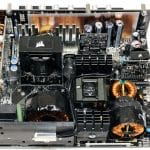
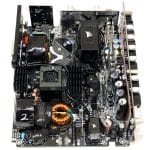
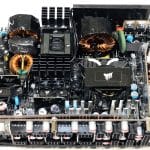
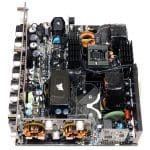

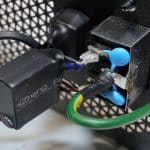
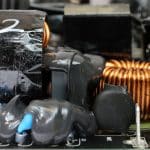
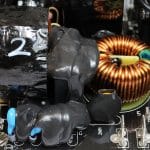
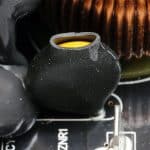
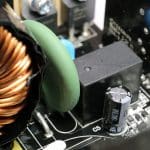
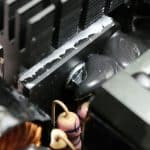
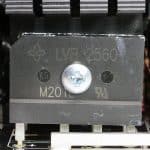
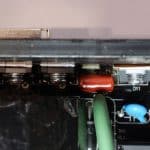
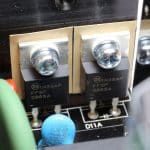
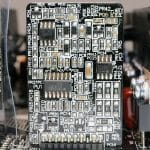
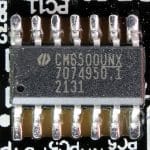

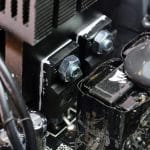
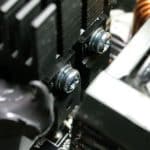
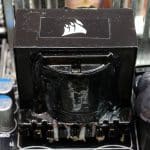
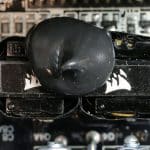
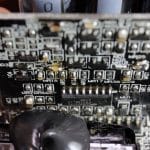
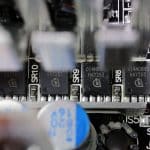
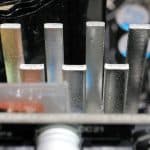
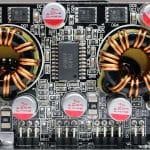
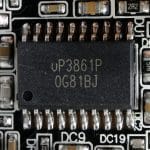
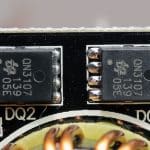
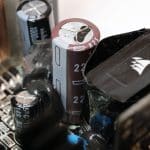
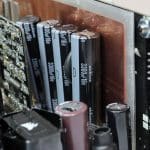

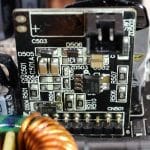
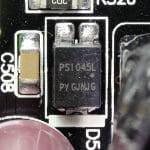
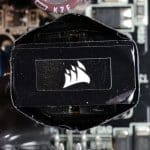
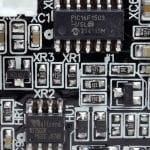

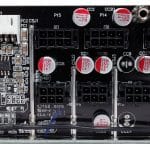
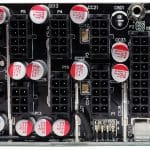
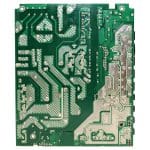
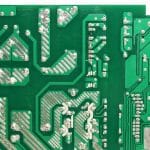
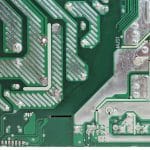
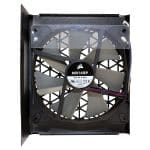
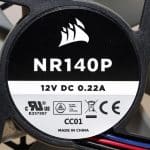
Channel Well Technology (CWT) is the OEM of all RMx Shift models. The same manufacturer builds the RMx units. The RMx Shift models have a completely different layout from the RMx, because of the PCB changes that the side-mounted modular panel required. Aside from that, most of the parts that Corsair used are the same as the RMx, including the PFC and LLC resonant controllers, the 5VSB circuit, the housekeeping IC and the PWM controllers of the DC-DC converters. The 750W and 850W use smaller PCBs than the 1000W and 1200W units, but the layout is the same. The build quality is high, and Corsair used top-notch parts to achieve high performance and increased reliability. The main differences between the 750W and 850W models with the 1000W and 1200W ones are the topology on the primary side. The former use a half-bridge topology, while the latter utilize a full-bridge one, allowing for higher power output while keeping energy losses in control. All models feature an LLC resonant converter for increased efficiency.
The APFC and resonant controllers, the DC-DC converters that generate the minor rails, the 5VSB circuit, the supervisor IC, the fan controller, and the fan are the same in all Shift models. The key differences are in the bridge rectifiers, the FETs, the NTC thermistors, the bulk caps, the filtering caps on the secondary side, and the cooling fan. Corsair decided to ditch the ML fan of the RMx unit in favor of the NR140P FDB fan, which Hong Hua provides.
Load Regulation
Ripple Suppression
| Test | 12V | 5V | 3.3V | 5VSB | Pass/Fail |
| 10% Load | 10.1 mV | 5.3 mV | 7.0 mV | 6.6 mV | Pass |
| 20% Load | 19.2 mV | 9.4 mV | 9.6 mV | 8.5 mV | Pass |
| 30% Load | 17.4 mV | 13.4 mV | 14.8 mV | 9.9 mV | Pass |
| 40% Load | 13.2 mV | 9.6 mV | 10.7 mV | 11.6 mV | Pass |
| 50% Load | 14.2 mV | 9.4 mV | 12.3 mV | 12.4 mV | Pass |
| 60% Load | 15.1 mV | 11.1 mV | 13.5 mV | 13.5 mV | Pass |
| 70% Load | 17.5 mV | 12.6 mV | 15.8 mV | 15.7 mV | Pass |
| 80% Load | 19.2 mV | 22.1 mV | 25.1 mV | 17.4 mV | Pass |
| 90% Load | 21.9 mV | 16.0 mV | 19.9 mV | 20.5 mV | Pass |
| 100% Load | 29.5 mV | 19.8 mV | 22.4 mV | 21.1 mV | Pass |
| 110% Load | 31.3 mV | 21.5 mV | 25.1 mV | 25.8 mV | Pass |
| Crossload 1 | 24.9 mV | 7.5 mV | 11.4 mV | 8.1 mV | Pass |
| Crossload 2 | 6.8 mV | 6.0 mV | 7.2 mV | 6.9 mV | Pass |
| Crossload 3 | 15.8 mV | 8.8 mV | 12.4 mV | 8.5 mV | Pass |
| Crossload 4 | 29.1 mV | 17.7 mV | 20.6 mV | 17.0 mV | Pass |
Transient Response
20% Load – 20ms
| Voltage | Before | After | Change | Pass/Fail |
| 12V | 11.903V | 11.701V | 1.69% | Pass |
| 5V | 5.063V | 4.965V | 1.94% | Pass |
| 3.3V | 3.299V | 3.198V | 3.05% | Pass |
| 5VSB | 4.987V | 4.947V | 0.80% | Pass |
50% Load -20ms
| Voltage | Before | After | Change | Pass/Fail |
| 12V | 11.882V | 11.806V | 0.64% | Pass |
| 5V | 5.055V | 4.970V | 1.67% | Pass |
| 3.3V | 3.288V | 3.181V | 3.25% | Pass |
| 5VSB | 4.950V | 4.911V | 0.79% | Pass |
I would like a closer to 1% average voltage deviation at 12V. Still, the performance is decent.
Transient Response ATX v3.0 & 12VHPWR Connector Tests
The PSU passed all ATX v3.0 transient response tests with success.
Hold Up Time
The hold-up time is longer than required.
Timings
The PSU supports Alternative Low Power Modes.
Inrush Current
Efficiency Normal, Light & Super-Light Loads
The platform is efficient at light and super-light loads. It could do better at normal and high loads, though.
Average Efficiency 5VSB
The 5VSB circuit needs an efficiency boost at 115V.
Vampire Power
Average Efficiency
The average efficiency score is not high because this platform focuses on light loads mostly.
Average PF
Average Noise
The average noise output is not high for this category’s standards. There are three other 1200W units, though, which achieve below 20 dBA average noise output.
Fan Noise & Speed Maps @ 28-32 °C
The PSU is dead silent with up to 650W loads, like its 1000W sibling. The 30 dBA mark is passed with 880W at 12V, and with 100W more noise is within the 35-40 dBA range.
Overall Performance
The competition is tough, and the last place in this chart doesn’t flatter Corsair’s new high-capacity PSU. Nonetheless, the difference from the majority of competitors is not large. The Thermaltake GF3 1200 and the NZXT C1200 lead the race.
Epilogue
The RMx 12oo and 1000 Shift models use a larger PCB than the 850W and 750W ones, allowing good airflow. The fan grill’s large perforations also help in this. Overall, all Shift models offer a quiet operation under normal operating conditions. The change to an FDB fan instead of the ML that the RMx units use definitely helped in this. I am a big fan of ML fans since they tolerate high operating temperatures, but it seems it isn’t easy to keep them quiet.
Load regulation is within 1% on all significant rails, ripple suppression is decent, the transient response is good, and the hold-up time is extended. Moreover, the unit is ATX v3.0 and PCIe 5.0 ready since it passed all tough transient response tests with up to 2400W transient loads! Corsair should improve the average efficiency and boost a bit overall performance by further tuning the platform in some areas. I suspect the side-mounted modular panel doesn’t make achieving the best possible performance easy.
The major selling points of all RMx Shift units are the side-mounted modular panels, the ATX v3.0 and PCIe 5.0 compatibility, and low noise output. These units also feature a high build quality, ensuring they will outlive the extended, ten-year warranty. Kudos to Corsair for thinking outside of the box and offering a PSU with a unique design. Hopefully, chassis manufacturers will welcome this new PSU design and make their products compatible.
- Full power at 47°C
- ATX v3.0 and PCie 5.0 ready
- Unique design (side-mounted modular panel)
- Cybenetics ratings besides 80 PLUS (means extra super-tough testing)
- Good enough transient response
- Top build quality
- Properly set OCP at 12V and OPP
- Silent operation
- Highly efficient at light loads
- Long hold-up time
- Low inrush current with 115V
- ALPM support
- Lots of connectors, including a 600W 12VHPWR
- Fully modular
- Low vampire power
- Quality, FDB fan
- 10-year warranty
- Overall performance doesn’t meet the competition
- The average efficiency needs boosting
- The 5VSB rail could be more efficient
- Not so tight load regulation at 3.3V
- The short distance between all peripheral connectors
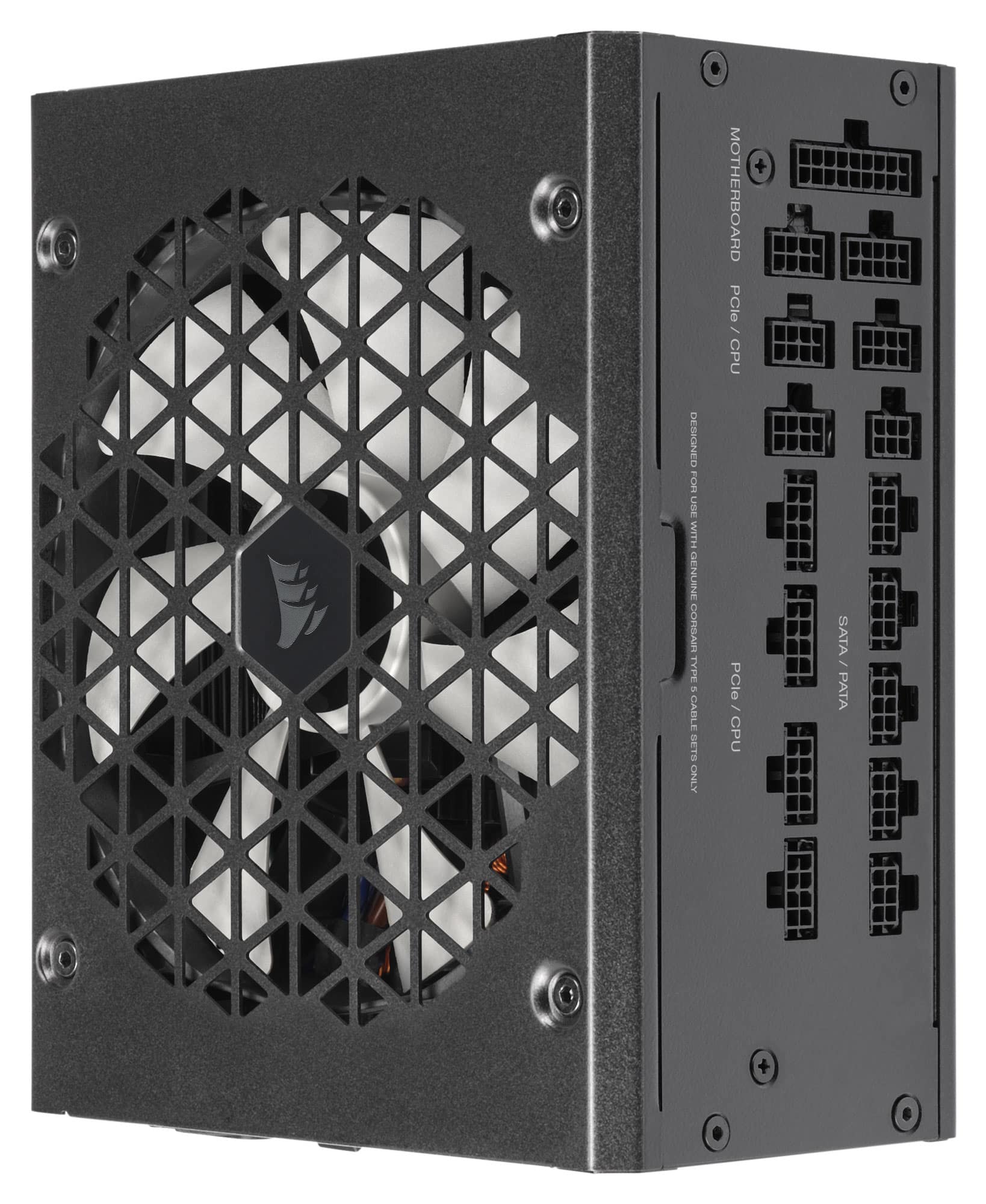
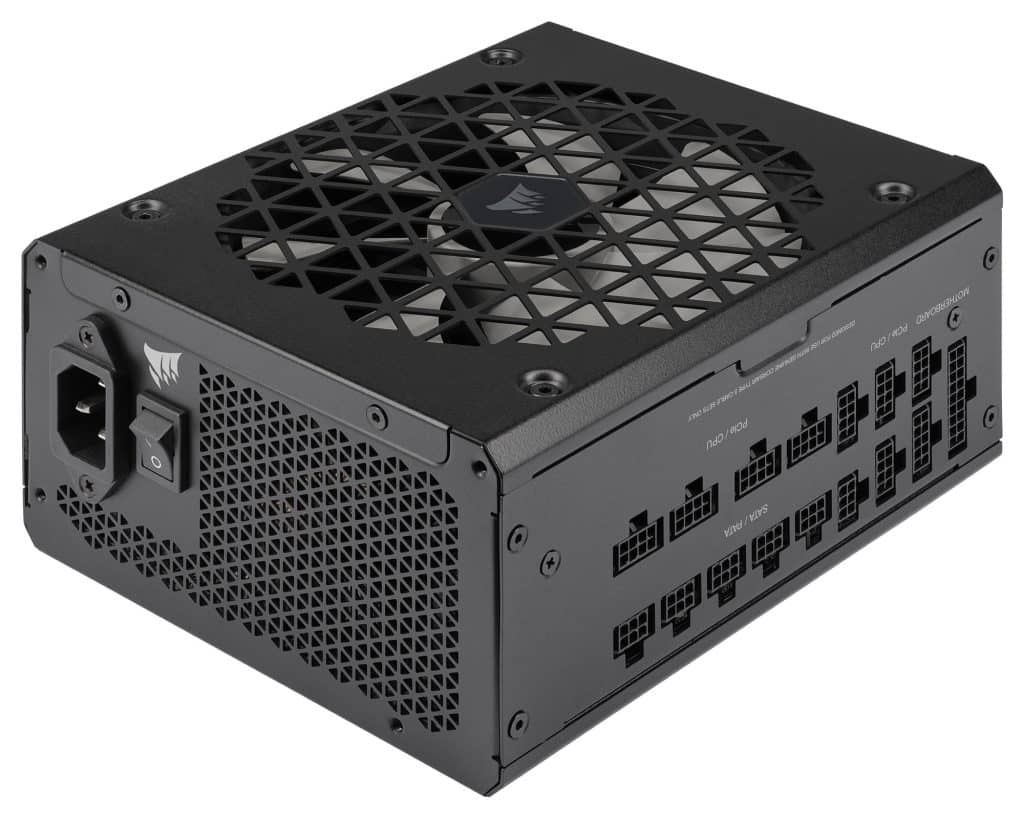
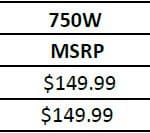

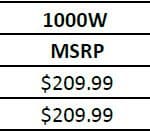
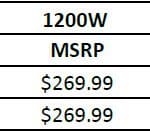
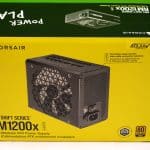
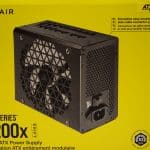

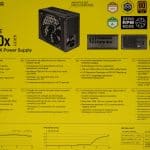
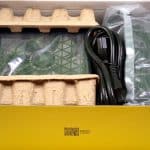

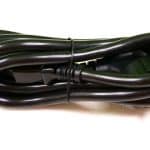

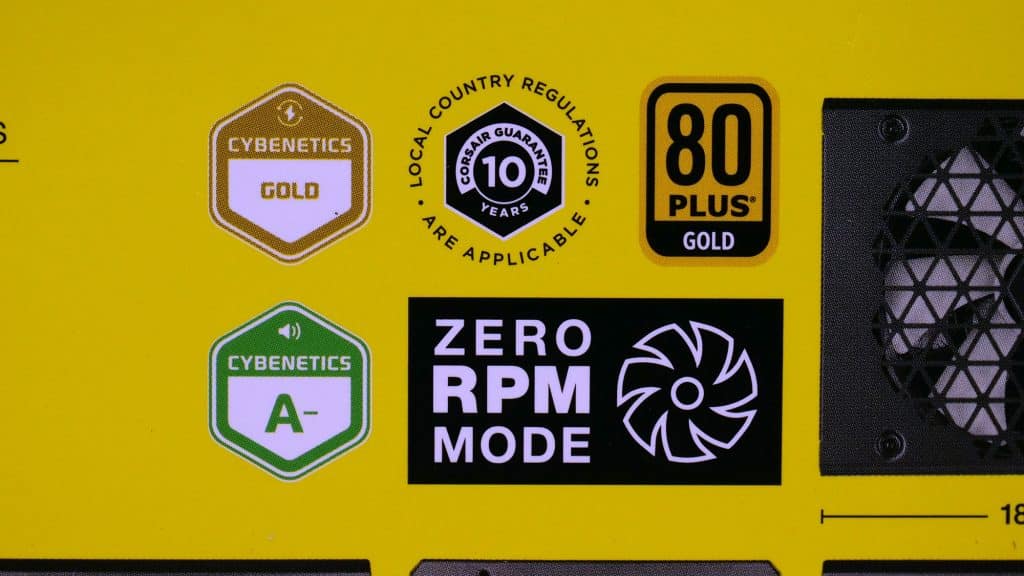
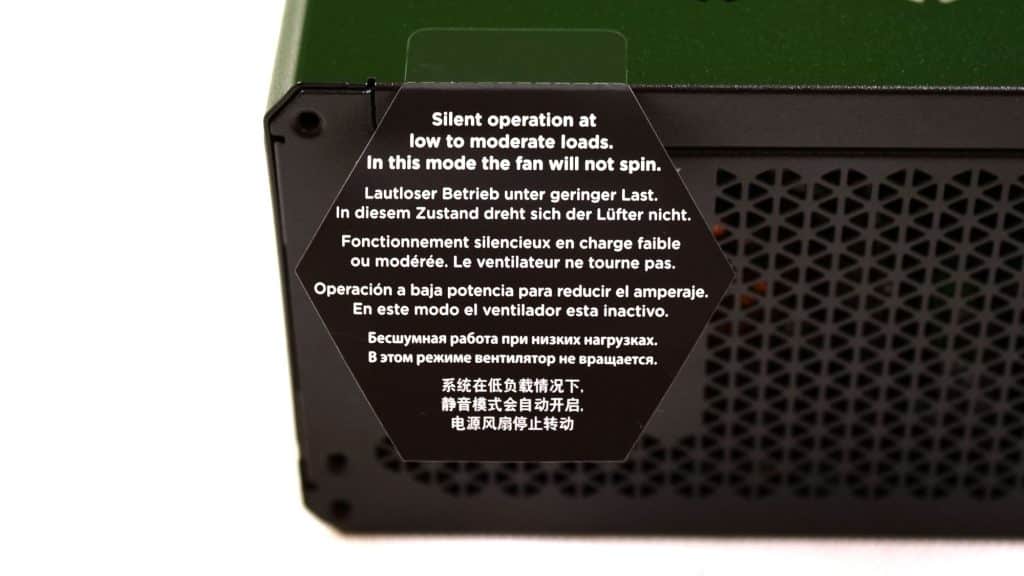
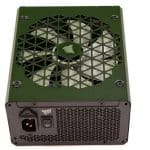


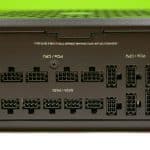
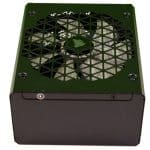
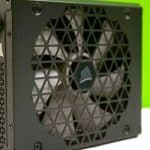
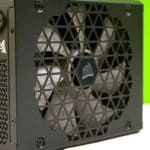
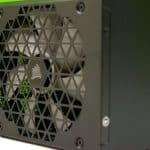
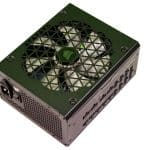
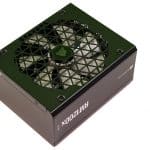
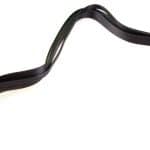
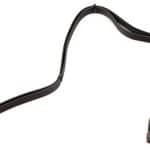

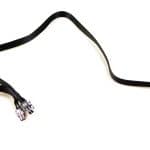
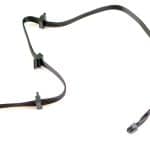



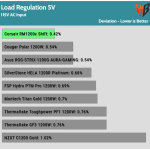
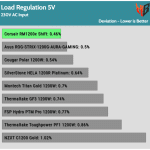
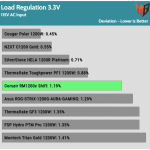
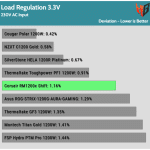
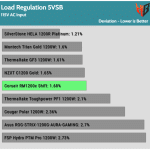
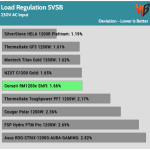
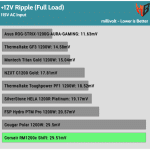
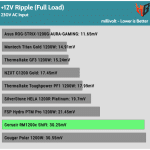
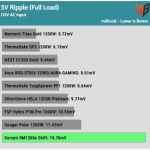


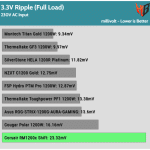

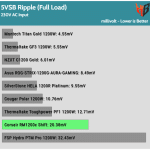

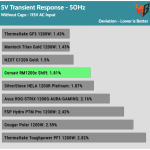


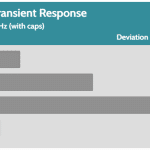
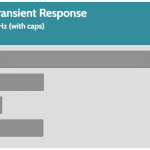
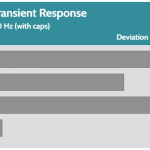
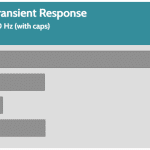
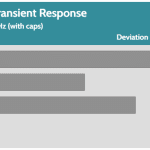
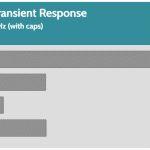
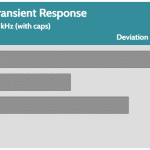
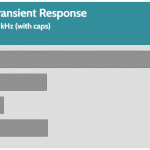
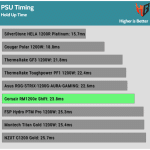
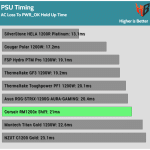
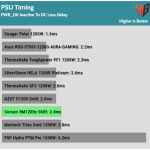
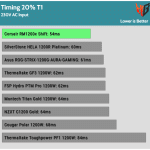
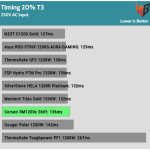

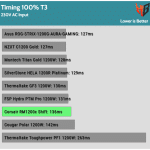
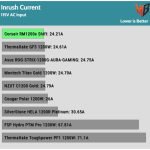
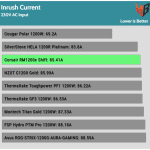

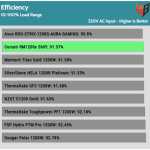
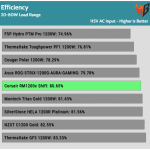
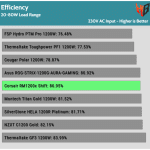

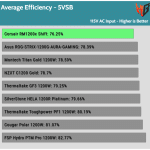
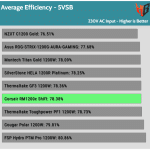
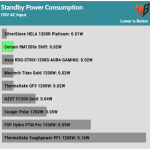

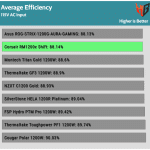
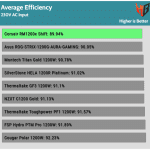
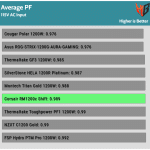
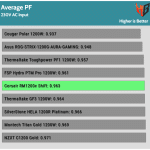
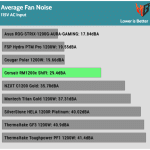
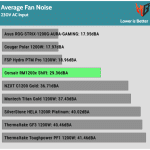
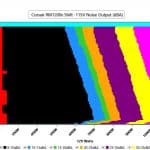
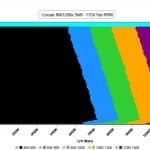
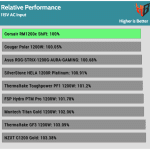
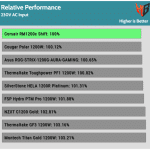
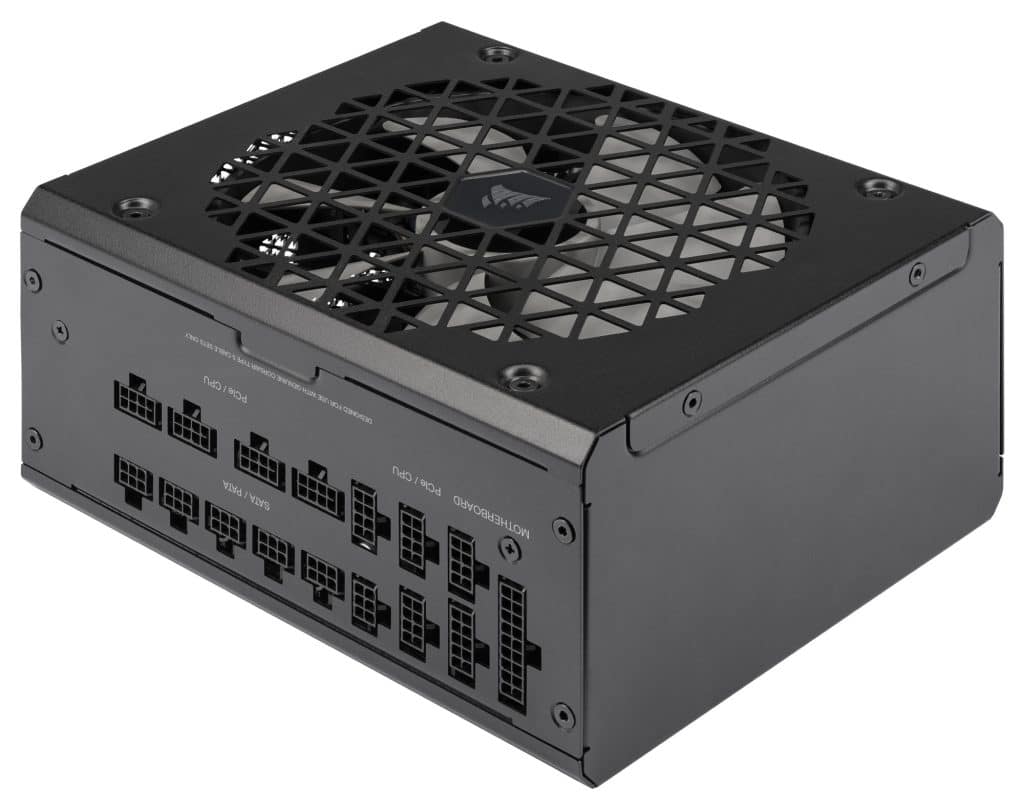

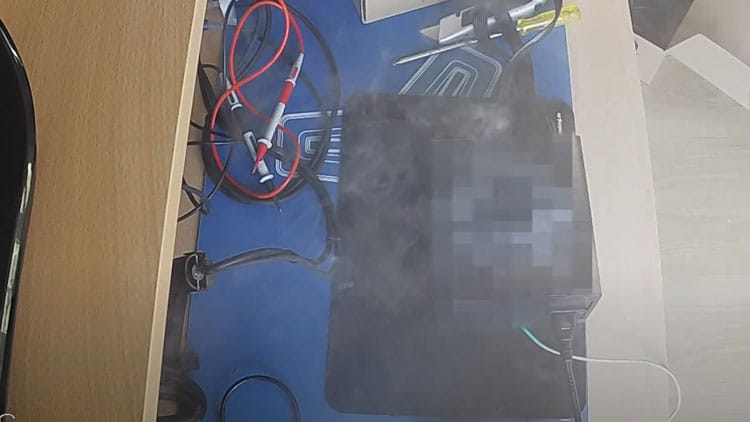
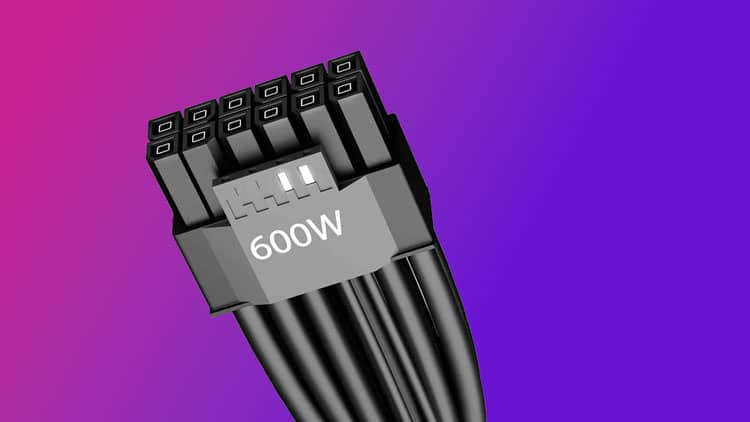
Is it true the rm1200x shift is already 3.1 compliant due to not having the problematic 12+4 connector?
yes
I don’t have this case either, sorry.
Hello,
can you tell me, if I can use the Corsair RM1200x Shift PSU with the Lian Li EVO XL case?
I couldn’t find any pictures or information.
Thank you very much in advance
Hello. Would you say that the 1200W variant of the RMx Shift PSU would suffice well for a build with a 7950x CPU and a 4090? I know that the Watt capacity implies such, but in terms of the overall quality of the Power Supply, would this be sufficient?
I am kind of debating between the Dark Pro Power 12, or this one after hearing about it. The side ports are a very interesting idea and I kind of like it, so I’m undecided at the moment.
Yes, it will be more than enough. If the side ports meet your needs, go for it!
Wow, that was an amazingly fast reply! Thank you for the information. Do you think that it could handle more than one high-end GPU? (Say the 4090 and the 6900XT together, on top of a high end processor IE 13900/7950x)? Sorry for adding onto the questions. I suppose a better thing to ask is, how much could this power supply stably handle? Are there any plans for a variant that exceeds 1200W?
Have a great day!
It depends on the CPU load. 13900K can reach 370W sustained stock and >460W spikes. I would go for a 1600W PSU to handle to high-end GPUs and a power hungry CPU.
Going back to this, a more general question
Does the RMx Shift PSU come with a good 12VHPWR Cable, or would it be recommended to get a dedicated one from either Corsair or Cablemod? (I am also curious as to what the WR bit means, since I believe the rest is 12-Volt High Power?)
Thanks again!
There are no bad and good native 12VHPWR cables. The Shift uses a proper one, able to deliver its rated Wattage without any issues.
12V High PoWeR
Here is a link to a fine article, written by my friend Jon: http://jongerow.com/12VHPWR/
Thank you for your response!
(I am replying to this as it won’t let me reply to the latest one, perhaps there is a limit to the amount that can be replied to, oops)
That is good to hear, and I just read the article you linked. If I read correctly, this PSU should be able to better handle certain bends since it doesn’t need to bend east or west as much as it can bend up with the side ports. That is pretty neat.
Have a great day =D
Thank you!!
Hello
Thanks for your efforts i am in a middle of a new PSU purschase and i am confused between
Thermaltake Toughpower GF3 1200W ATX v3.0 PSU
OR
Corsair RM1200x Shift ATX v3.0 PSU
From your tests which one would you recommend?
Both are good. It depends if you need the side panel of the Corsair Shift. If you don’t and you find at a better price the TT PSU, go for the latter.
Glad to see informative, competent, thorough technical reviews. Reminds me of days long ago. Keep up the good work!
Looks nice but I don’t see native 16 pin VHPWR which is kind of a let down.
The way that Corsair decided to implement 12VHPWR, on the PSU’s side, is actually better.
Curious, why do you say that? Seems odd to not include the standard 16 pin. I thought that was required with this new standard, but i guess not.
It is a genuine 12+4, it just uses a different approach on the PSU’s modular panel.
Did they never release the Asus ROG Strix 1200G Aura Gaming? Can’t find it anywhere online
It is not available yet. Don’t have a clue when they will ship it to the market, sorry.
Are you still planning on reviewing the MSI MEG Ai1300P?
It is not in the plan so far.